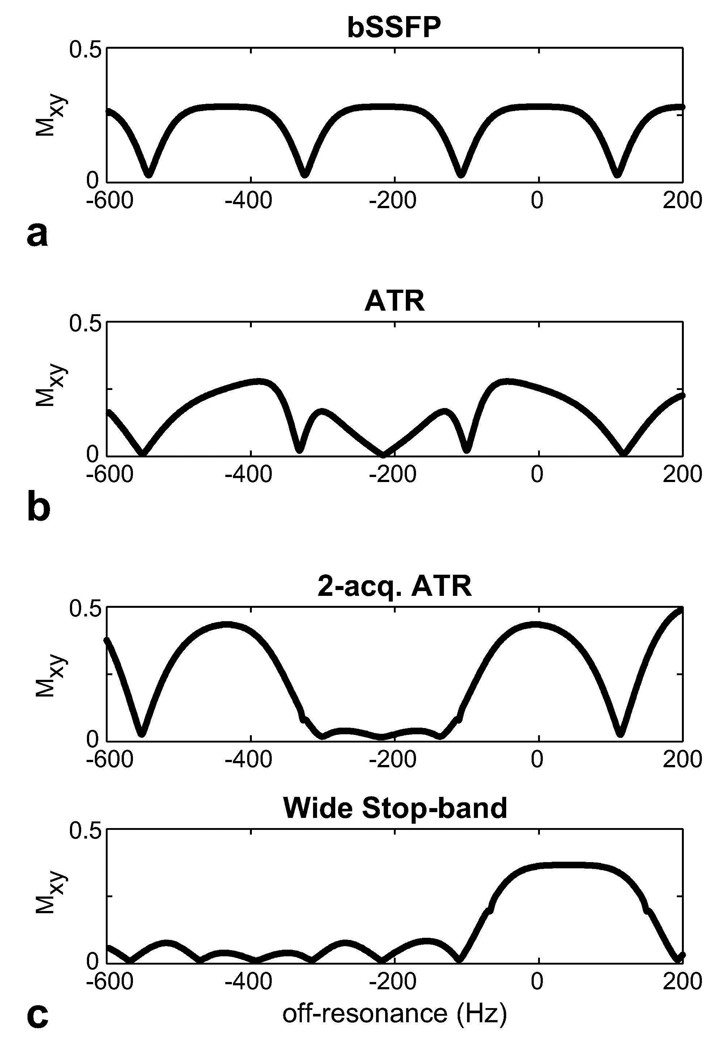Figure 3.
The transverse magnetization profiles were simulated for a: bSSFP, b: ATR-SSFP sequences, and c: the ATR-based double-acquisition fat suppression method. ATR-SSFP creates a stop-band around the fat resonance; however, the residual stop-band signal with increasing field inhomogeneity limits the level of achievable suppression. On the other hand, the double-acquisition method robustly suppresses the fat signal. Furthermore, this method can be modified to widen the stop-band and provide increased immunity to field inhomogeneity.

